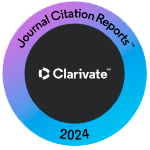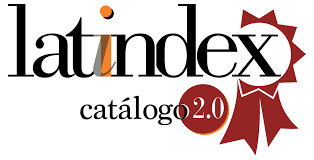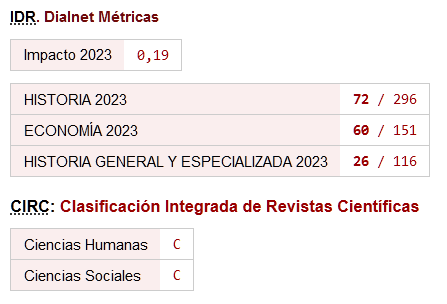The administrator and the parochial accounting: Control and accounts rendering. Agüimes town 1730-1830
DOI:
https://doi.org/10.26784/issn.1886-1881.v2i3.213Keywords:
Church, Parish, Spain, History, AccountingAbstract
The parish, fundamental prop in the history of the Church, receives importance as generating source of documents in the middle of the XVIth century with the canonical procedures emanated from the Council of Trent, held the years 1543 to 1562, when diverse chapters were promulgated in order to govern the parochial life and activities. As a result of these regulations the parish became both a producer and a receiver of documents, being the files of documentation that remain in its archives a patrimony of every parish. From its beginnings, the parish assumed administrative functions, needing a person to be in charge of the management of its goods. The maximum responsible for the economic administration of the parish was the "mayordomo" or administrator who was in charge of the exploitation of the properties, collection of the revenues and control of the expenses. He had to record the operations he managed in a set of account books. At the end of the respective period these records were transcribed by a notary in the libro de Quentas de Fabrica (General Account Book of the Parish) that was used for the rendering of the accounts. In fact, periodically these accounts were audited by the bishop or person designated by him to this effect, who expressed his opinion about them and in its case dictated the necessary amendments and mandates both in the aspects related to the worship and to the economics and countable matters. The accounting under study is therefore an ecclesiastical accounting, that is, a private accounting kept by the administrator or "mayordomo" on behalf of the parish in order to know and follow the parish operations of which he had to render accounts to the owners of the administered goods. Through the study of a figure of great relevancy in the parochial institution from the economiccountable point of view, namely the administrator, at the parish of Agüimes Town, in the island of Gran Canaria, during the period 1730-1830, it is intended to contribute to the enrichment of the history of accounting in the ecclesiastic area. This target is to be met by the investigation and description of the functions of the parochial administrator and their economic-countable implications, as well as by the analysis of the account books and other countable documentation kept by him and above all of the libro de Quentas de Fabrica (General Account Book of the Parish). This book served the administrator to render accounts before the bishop or general inspector designated to take them in the visits that were periodically carried out to the parishes.
Downloads
References
FUENTES PRIMARIAS
Archivo Parroquial de San Juan Bautista de Telde (A.P.S.J. B. Telde) VI Fábrica. A. Cuentas de fábrica. Caja nº 3
Archivo Parroquial de San Sebastián de Agüimes (A.P.S.S. Agüimes) VII Fábrica. A. Cuentas de fábrica. Caja nº 3
VII Fábrica. A. Cuentas de fábrica. Caja nº 4.
VII. Fábrica. B. Rentas y tributos eclesiásticos. Caja nº 1. IX Ordenes y mandatos Caja nº 3
Archivo Histórico Diocesano de Las Palmas (AHD)
Parroquial. Erección de la Parroquia de Nuestra Señora de Candelaria Ingenio.1815.
BIBLIOGRAFÍA
Acosta Brito, C. y Rodríguez Calleja, J. (1999): El archivo parroquial de San Juan Bautista de Telde. Cabildo de Gran Canaria, Gran Canaria.
American Accounting Association (1970): "Report of the Comité on Accounting History". Suplemento de la Accounting Review.
Booth, P. (1993): "Accounting in churches: a research framework and agenda", Accounting, Auditing and Accountability Journal. Volumen 6, número 4. https://doi.org/10.1108/09513579310045684
Calvo Cruz, M. (2000): La Contabilidad de Espolios y Vacantes: Diócesis de Canarias 1753-1851, Las Palmas de Gran Canaria, Ed. Servicio de Publicaciones y Producción Documental de la Universidad de Las Palmas de Gran Canaria.
Calvo Cruz, M. (2003): "Problemas administrativos en torno a la división de la diócesis de Canaria en 1819". Comunicación presentada al XIX Congreso de la Asociación de Archiveros de la Iglesia en España. La Laguna, Tenerife.
Casaus Ballester, M. (1990): Catálogo de los fondos parroquiales del Archivo Histórico Diocesano de Teruel.
Departamento de Cultura y Educación de la Diputación General de Aragón, Teruel.
Cazorla León, S. y Sánchez Rodríguez, J. (1997): Obispos de Canarias y Rubicón. Eypasa, Madrid.
Código de Derecho Canónico (1992). Quinta edición revisada y actualizada, Ediciones Universidad de Navarra, S.A.
Constituciones Sinodales del Obispado de Canarias, hechas y ordenadas por el Doctor Don Cristóbal de la Cámara y Murga, Obispo de Canaria, del Consejo de su Majestad, en la Sínodo Diocesana, que se celebró en la dicha ciudad de Canaria, en 30 de Abril de 1629 años. Archivo del Museo Canario.
Constituciones, y nuevas addiciones synodales del Obispado de las Canarias, hechas por el Ilustrísimo Señor Don Pedro Manuel Dávila y Cardenas, en Madrid, oficina de Diego Miguel de Peralta, año 1737. Archivo del Museo Canario.
Duncan, J. y Stocks, M. (2003): "The understanding of internal control principles by pastors", Nonprofit Management and Leadership, 2003, núm. 2. https://doi.org/10.1002/nml.30
Fonfeder, R. y otros (2003): "Internal controls in the Talmud: The Jerusalem Temple", The Accounting Historians Journal, junio.
https://doi.org/10.2308/0148-4184.30.1.73
García Añoveros, J. (1990): "Visitas pastorales en la Diócesis del Reino de Guatemala, 1752-1791", Missionalia Hispánica, Hispania Sacra nº 42, pp. 635-653.
Garzón Marín, P. (2001): "El hospital de Santa María de Plasencia: características del método contable utilizado (1789-1839)", comunicación presentada en el XI Congreso de AECA "Empresa, Euro y Nueva Economía", celebrado en Madrid.
Hernández Borreguero, J. (2002): El Cabildo Catedral de Sevilla: organización y sistema contable (1625 - 1650). Tesis doctoral, Universidad de Sevilla.
Hernández Borreguero, J. (2005): "La elección del método contable: el caso del Cabildo Catedral de Sevilla (siglo XVII)", comunicación presentada en el V Encuentro de Historia de la Contabilidad "Cervantes y la Real Hacienda", celebrado en Toledo.
Hernández Esteve, E. (1996): "Problemática general de una historia de la contabilidad en España. Revisión genérica de las modernas corrientes epistemológicas y metodológicas, y cuestiones específicas", en En torno a la elaboración de una Historia de la Contabilidad en España, Madrid, Asociación Española de Contabilidad y Administración de Empresas (AECA), pp. 45-114.
Hernández Esteve, E. (2005): Prólogo a la obra de Rivero Fernández y otros: Economía y contabilidad monásticas en la transición del Antiguo al Nuevo Régimen. El Monasterio de Santa María la Real de Oseira , Orense: Deputación Provincial de Ourense, 2005.
Laughlin, R. (1990): "A Model of Financial Accountability and the Church of England", Financial Accountability and Management, 1990, núm. 2. https://doi.org/10.1111/j.1468-0408.1990.tb00427.x
LLopis, E., Fidalgo, E. y Méndez, M.T. (2002): "The 'Hojas de ganado' of the Monastery of Guadalupe, 1597- 1784: an accounting instrument for fundamental economic decisions", Accounting, Business & Financial History, Vol. 12 No. 2, London, UK, pp. 203 - 229.
https://doi.org/10.1080/09585200210134929
Martí Bonet, J.M. (2003): "Parroquia, su historia y su geografía en los archivos de la Iglesia en España". Ponencia presentada al XIX Congreso de la Asociación de Archiveros de la Iglesia en España, La Laguna, Tenerife.
Martín Lamouroux, F. (1992): "El libro de cuentas de estudiantes y algunos particulares de la Colegiata de San Luis en Villagarcía de Campos desde 1742 a 1757", Cuadernos de Investigación Contable, Universidad de Sevilla, Vol. 4, núms. 1 y 2.
Martín Lamouroux, F. (1996): "La Contabilidad en las instituciones civiles, eclesiales y vinculadas, siglos XV y XVI", En torno a la elaboración de una Historia de la Contabilidad, págs 315 a 334. Asociación Española de Contabilidad y Administración de Empresas, Madrid.
Martínez Ruiz, E. (Director) (1998): Diccionario de Historia Moderna de España. I La Iglesia, Istmo, Madrid.
Martínez Sanz, J. (1986): "Una aproximación a la documentación de los archivos parroquiales de España", Hispania nº 162, pp. 169-194.
Maté Sadornil, L., Prieto Moreno, B. y Tua Pereda, J. (2000): "Accountancy In The Monastery Of Santo Domingo De Silos (18th Century): Analysis Through The Accounting Books Of The Building Work On The Church", 8th World Congress Of Accounting Historians, Madrid.
Maté Sadornil, L (2002): "Income which provides for the economic sustenance and formation of the patrimony of the Monastery of Silos in the 18th century in the light of its accountancy books", Paper presented at the d Workshop On Accounting In Historical Perspective, Lisboa.
Maté Sadornil, L (2004): "La Actividad Financiera del Monasterio de Silos en los siglos XVII Y 18TH a la luz de sus libros de cuentas", De Computis (http://www.decomputis.org), nº 1. AECA, Madrid, pp. 97-141. https://doi.org/10.26784/issn.1886-1881.v1i1.242
Melis, F. (1950): Storia della Ragioneria. Contributo alla conoscenza e interpretazione delle fonti significative della Storia economica. Bolonia.
Poggiaspalla, F. (1961): La Diócesis y la Parroquia. Ed. Litúrgica española, S.A., Barcelona.
Quattrone, P. (2004): "Accounting for God. Accounting and Accountability Practices in the Society of Jesus (Italy, 16th-17th centuries)", Accounting, Organizations and Society, Vol. 29:7, pp.647-683.
https://doi.org/10.1016/j.aos.2004.03.001
Rodríguez Calleja, J y Acosta Brito, C. (2001): El archivo parroquial de la Villa de Agüimes. Ayuntamiento de Agüimes, Gran Canaria.
Rubio Merino, P. (1999): Archivística Eclesiástica. Nociones Básicas. Guadalquivir S.L., Sevilla.
Sanz Sancho, I. (1991): "La Parroquia de San Pedro de Córdoba en la Baja Edad Media", Medievalia Hispánica, Hispania Sacra nº 43, pp. 715-734.
Sarmiento Pérez, J. (2003): "Visitas pastorales de la Diócesis de Badajoz en el episcopado de Mateo Delgado Moreno (1817-1833)", Hispania Nova, nº3, http://hispanianova.rediris.es/articulos/03_008.htm.
Suárez Grimón, V. y Quintana Andrés, P.C. (2003) Historia de la Villa de Agüimes (1486-1850), Tomos I y II, Ayuntamiento de Agüimes, Gran Canaria.
Tua Pereda, J., Mate Sadornil, L. y Prieto Moreno, B. (1998): "La contabilidad en el Monasterio de Santo Domingo de Silos: Análisis de las constituciones de la congregación benedictina de San Benito de Valladolid (siglo XVIII), ponencia presentada al II Encuentro de trabajo "La Historia de la Contabilidad en España: dos formas de entender la Historia de la Contabilidad", Mairena del Aljarafe (Sevilla), septiembre.
Viera y Clavijo, J. (1982): Historia de Canarias II. Goya Ediciones, Santa Cruz de Tenerife.
Downloads
Published
How to Cite
Issue
Section
License
Copyright (c) 2022 Candelaria Castro Pérez, Mercedes Calvo Cruz

This work is licensed under a Creative Commons Attribution-NonCommercial-ShareAlike 4.0 International License.










